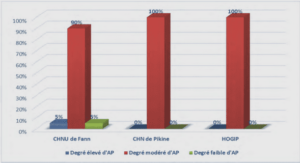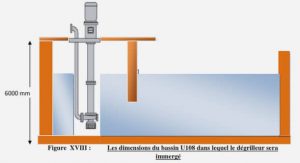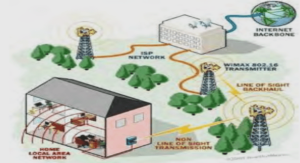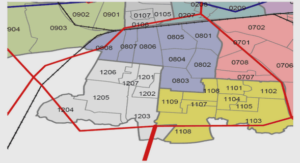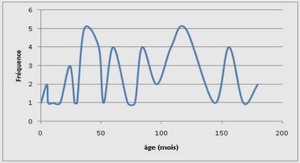Methodology
The methodology of this dissertation is outlined in three common phases regarding Figure 1-5. Firstly, a comprehensive review is conducted to characterize the opportunities and challenges of ALMD studies in the literature. This examination aids in specifying the objectives and their necessities. Secondly, state-of-the-art methods are explored in order to define useful mechanisms with regard to the prescribed goals. These mechanisms are defined by investigating the existing algorithms and tools whose properties can present a good opportunity for effective and feasible propositions. Consequently, relevant approaches are proposed and their requirements are satisfied. Thirdly, analytical simulation and actual experimentation are employed to examine the suggested manners by use of real-world data of either public databases or laboratory measurements. For this matter, an experimental house with a functional acquisition system has been constructed to supply the actual data related to different experimental tests. Subsequently, the performance, simplicity, applicability, and limitation of every proposition are thoroughly analyzed and compared with the relevant researches. Indeed, for the examination of each ALMD study, a rigorous evaluation process is exploited. In the following, the methodology steps are detailed in accordance with each proposition, described in the previous section .
• Data generation approach: In order to develop a useful tool for simulating real-world scenarios, important features of publicly available databases are probed. Accordingly, by means of statistical analysis, the actual data of household appliances from a well-known database are explored in order to model their consumption schedules. In addition, wholebuilding simulators are investigated to identify an appropriate simulation structure for generating the synthetic data of targeted loads (in our case ESH and EWH). Afterward, a post-processing method is studied to modulate the artificial data of these loads and create their ON/OFF load profiles.
• Household database contraction approach: As the fundamental of appliance load modeling in aggregate level, household load disaggregation mechanisms are extensively analyzed. Particularly, probabilistic methods are examined due to their capability to provide a sensible interpretation of appliances’ physical behavior. This examination focuses on the manners that are good fit for on-li ne unsupervised learning of finite-state load models. Additionally, clustering algorithms are studied in order to find effective techniques for classifying appliances operation. Specifically, non-parametric statistical means of clustering are evaluated because of their competence in unsupervised frameworks. Moreover, adaptive procedures are assessed to find out their abi1ity to manage recurrent patterns and models upgrade of the loads. Different accuracy metrics are analyzed in order to define a set of efficient ones for a careful exarnination of both pattern recognition and model construction phases, necessitated by the proposed approach .
• On-li ne anomaly detection approach: A thorough research is focused on the means of household appliances’ anomaly detection in both aggregate and appliance levels. An overview is carried out to determjne the anomaly nature of household electrical devices, the anomalous behavior of major ones (whom have a finite-state load), and their readily available electrical features for actual experimentation. Consequently, a set of appliances candidate, located in an experimental hou se in our lab are chosen for a practical study. For these devices, different anoma1y scenarios are exercised to analyze their behavior via continuous monitoring. Furthermore, machine-Iearning methods are studied to define practical techniques that are suitable for real implementation. This analysis ai ms straightforward algorithms for normal behavior modeling and anomalous operation detection. Subsequently, several diagnostic tests are considered to evaluate the performance of the anomaly detection mechanism.
Introduction to ALM Household
ALM is the key platform to acquire appliances’ information that is supplied to customers and utilities for their specific energy-saving matters. Particularly, the acquired knowledge can enable the diagnosis of anomalous appliances by providing the essentials for diagnostic estimation algorithms. In fact, the recent interest in enabling the diagnosis ability of ALM systems has necessitated a further exarnination of its anomaly detection requirements in both intrusive and non-intrusive aspects [31 ], [57]. Accordingly, this section provides an investigation into important features of load monitoring and anomaly detection as the essential elements of ALMD. Specifically, the literature focuses on NILM system by exploring its different procedures and their characteristics. Furtherrnore, the basis of anomaly in household electrical appliances is examined from different perspectives. Since this document is presented by manuscripts for each a detailed prior art has been contributed, this section provides a general description of important ALMD principals [10], [ Il ], [31 ], [42]. Due to installation ease, overall monitoring capability, and efficient costs, NILM approach is promoted to facilitate a flexible foundation for obtaining appliances’ in-operation information.
NILM realizes a perfect structure for the identification of targeted devices through the ability to relate the monitored electrical waveforms to individual appliances operation [31 ], [59]. NILM concept proposed by Hart [60] in 1992, is the practice of disaggregating household total electrical load measured at a single point into individual appliances signal, using the combination of an electrical acquisition system and signal processing algorithms [ Il ], [17], [60]. From ALM standpoint, NILM technology has been studying for a long time, however, it requires more progression in terrns of employed load disaggregation algorithrns as well as required essential prerequisites to be regarded as a sol ved problem [6 1]. Figure 2-1 shows NILM structure by describing the load identification process and its common learning mechanisms. These mechanisms are discussed in details below. Furthermore, Figure 2-2 exemplifies the aggregated power profiles of two typical houses from ECO [17] and REDD [62] as common publicly available databases that are combined with an EWH load profile regarding the Quebec case
Harmonie features
Harmonics are usually employed as additional features to active and reactive power consumption information [40]. In fact, a spectral envelope analysis can aid in identifying appliances that can not be detected by their macroscopic features [40], [68], [69]. Harmonics can be explored by using both steady-state and transient signaIs. They can aid in the identification of non-linear loads with non-sinusoidal current waveform [66]. Although harmonic-based methods can benefit appliances’ operation detection, they experience difficulties in measuring energy consumption as an essential goal of NILM systems. They can require excessive training and face robustness issues in the presence of new loads [66], [70]. Furthermore, these features can be inftuenced by electromagnetic interference and electrical wiring [66]. Indeed, the choice of electrical characteristics for the feature extraction phase is notably affected by database proficiency, mainly appliances candidate and sampling frequency of data [J 1].
Therefore, in the first step, an explicit choice has to be carried out on targeted appliances. This has resulted in different load classifications, represented in numerous researches based on their technical notions of proposed NILM analysis [71 ], [72]. Normally, appliances are classified according to the number of their steady-state operations. Figure 2-3 explains household appliances classification based on their operation states. Consequently, appliances decision can facilitate a suitable choice of sampling frequency with regard to the construction of an efficient database. As mentioned, the feasibility of NILM analytical process depends on the quality and sufficiency of sorne crucial factors that should be met by properties of the utilized database [ 11 ]. These factors should be defined based on NILM’s targeted applications that are regulated in accordance with customer preferences and system operator interests. Indeed, specifying the implementations can assist with appliances candidate and techniques decision that in turn, enhances the NILM practice [11 ], [40], [73]. It is noted that energy saving as the foundation of NILM is the mutual concem of both customers and system operator and thus; the corn mon application of NILM systems [30]. Table 2-1 presents the impacts of the targeted set of household loads on the choice of preferred feature space and sampling frequency in a general aspect [30], [40], [61 ].
Abstract |

